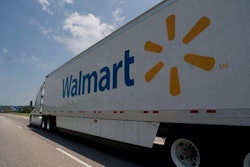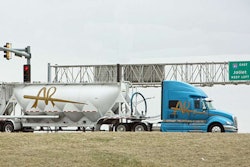The driver shortage that so many analysts and industry insiders have been predicting in recent years is finally here in full force. At the same time, tonnage is at an all-time high, further crimping the trucking industry’s potential for capitalizing on good business conditions after a hard recession. As many fleets have maximized their recruiting and retention efforts, the focus now shifts to squeezing every ounce of productivity and efficiency out of their truck assets.
Before 2005, Walmart Transportation worked like many fleets to realize incremental gains in fuel and freight efficiency annually. Then, during the height of the previous driver shortage, Walmart announced a new global responsibility initiative that included a lofty goal for its private fleet to double its efficiency in 10 years from a baseline in 2005 to 2015.
For Walmart – a company whose U.S. operation employs 1.3 million people and has 4,987 retail stores, 42 regional distribution centers (each serving roughly 100 retail locations) and a fleet of 7,000 trucks – identifying and correcting inefficiencies in freight movement would have a major impact on its environmental footprint while it works to meet its goal.
More with less
To establish its 2005 baseline, Walmart Transportation established a formula to calculate its fleet efficiency by dividing vehicle miles traveled by miles per gallon to determine fuel consumption. It then takes the number of cases delivered and divides that by fuel consumption.
In the first several years of its efforts, Walmart Transportation set its sights on big wins, such as route optimization and strategic location of its distribution centers. It then focused on packaging, working internally and with suppliers to reduce the amount of space required in each trailer in order to load more freight.
The fleet also leveraged its relationships with truck OEMs, trailer makers and suppliers to upgrade equipment to the latest technology and to add new tire designs and inflation systems. In 2006, it added auxiliary power units to tractors used in overnight operations, which netted the company savings of $25 million in diesel costs in just two years.










